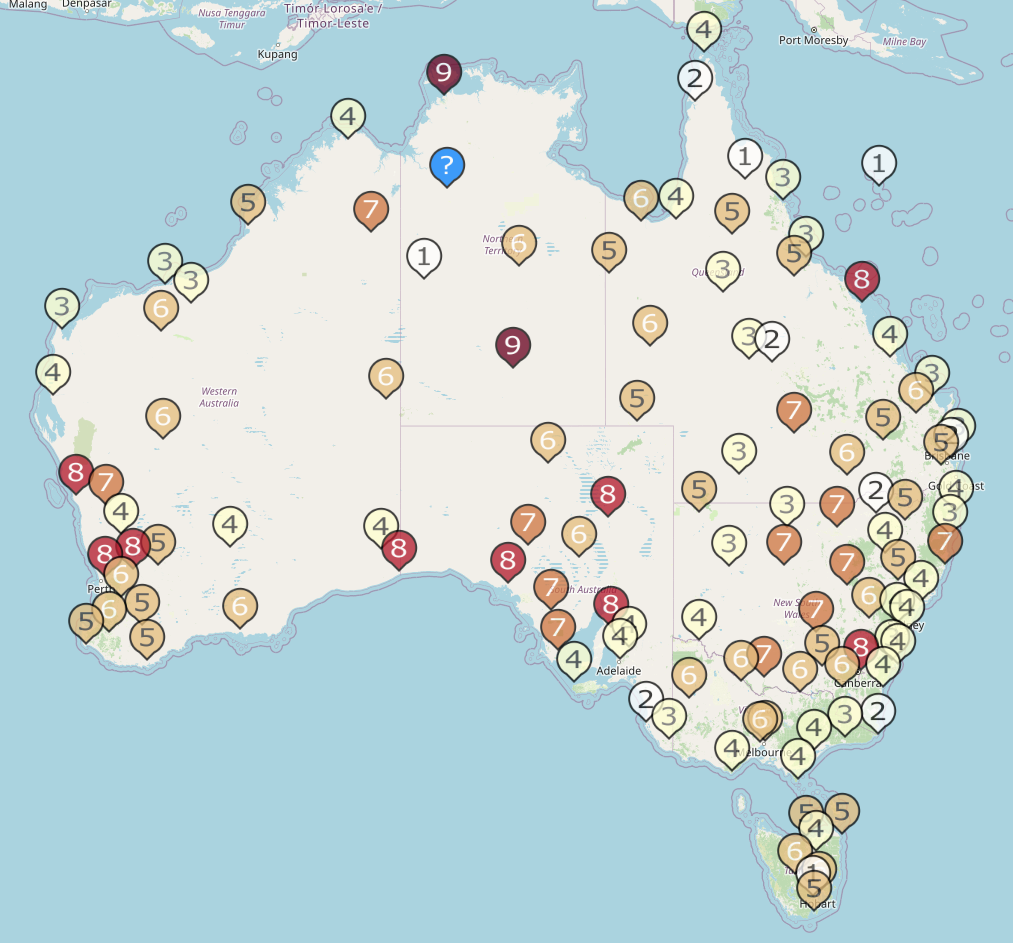Climatological normal
While reading a news article on US climate normals, I decided it might be better to use the most recent 30 years of temperature data to calculate the warming index, rather than 20 years of data. This change will align the warming index with the convention of the climatological normal.
Changing the period that calculates the warming index will affect the heating score also because it’s calculated by finding the highest warming index across all locations and using that as the highest heating score. This results in a different distribution of scores over the map of Australia, with Darwin and Alice Springs coming out on the top of locations that have recorded the highest increases in temperature in Australia. They both record a 1.5°C increase in maximum temperature in the most recent 30 years, when compared with the first half of their dataset.

Neither approach (20 nor 30 years) is necessarily more correct than the other. It does not mean that Alice Springs and Darwin have warmed disproportionately more than other places around Australia. One of the biggest factors affecting the warming index is not to do with location at all, it’s about how far temperature records go back for that location. Alice Springs’ and Darwin’s records go back to the starting point for ACORN-SAT (1910); many other locations in ACORN-SAT started recording after 1910. For all more recent locations, their warming indexes are lower because there are fewer records to compare the recent history with. This is one of the factors that makes aggregating between locations such a challenge. Climate scientists have spent years collecting and aggregating records to remove any biases from the equipment, recording methods and durations.
The warming index and heating scores are not without utility, however. They’re a good guide for comparing coastal locations with inland and as a rough guide to compare the effect of global warming at different latitudes and elevations. One thing that is clear - whether it’s inland or coastal, rural or urban, Northern Australia or in the south: over the last 30 years maximum temperatures have trended up.